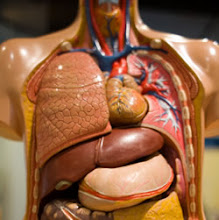Asbestos is a naturally occurring mineral consisting of strong, flexible fibers, which can be partitioned and woven into insulation material. Mining of asbestos began late in the 19th century and the use of asbestos escalated in the 1940's. Asbestos exposure is the primary cause of mesothelioma. Tiny particles of asbestos invade the body through inhalation or ingestion and become embedded in the linings of body cavities. Asbestos limits and stricter protocols for workers handling asbestos were instituted in the 1970's, when the health risks started to become apparent.
Mesothelioma occurs when the cells of the mesothelium, a two-layer lining of the internal organs, become abnormal and attack the organ or spread to other parts of the body. There are three malignant types of mesothelioma:
· Pleural: This form originates in the chest cavity and may involve the lungs. It is difficult to detect and most often spreads to other parts of the body. It is the most common type, responsible for approximately 70 percent of mesothelioma diagnoses. The survival rate is 17 months after symptoms commence for 92% percent of victims.
· Peritoneal: The type begins in the abdomen cavity lining and advances to the liver, spleen and bowels. The survival prognosis is ten months after symptoms appear. About one-quarter of all mesothelioma cases are peritoneal.
· Pericardial: This manifestation involves the lining of the heart. Eventually the cancer progresses until the heart cannot deliver oxygen to the body. It is the rarest form and accounts for approximately 5 percent of all cases.
Benign mesothelioma is a separate form of mesothelioma where a non-cancerous, non-spreading tumor develops and invokes symptoms similar to those of malignant forms of mesothelioma. Extensive testing is required to differentiate between malignant and benign. Benign mesothelioma occurs in less than 10 percent of all cases.
Mesothelioma lies dormant in the body's system for a substantially long period of time, typically between 20 and 50 years, before symptoms begin. The age at the time of exposure, levels of exposure and duration of exposure are all risk factors. Young workers with high levels of exposure over many years are at greatest risk. People that fall within this category are more likely to die from one of asbestosis, lung cancer or mesothelioma.
Asbestos exposure still exists in our environment today. The US Environmental Protection Agency estimates 700,000 buildings, including schools, in the United States contain asbestos insulation.
A jury in Baltimore recently awarded a mesothelioma victim $1.178 million in compensation. The Plaintiff was exposed to asbestos during the 1960s and '70s.
If you or a loved one has been exposed to asbestos and diagnosed with mesothelioma, it is imperative you seek legal advice from a knowledgeable attorney as soon as possible.
Attorney Richard Hastings, for the past two and one half decades, has been helping injured clients and families collect millions of dollars in losses ranging from motor vehicle accidents to wrongful death, to medical malpractice. He is the founder of Selectcounsel, LLC, a free service that helps you find one of the best lawyers in your area and is the author of the books "How To Find A Great Lawyer" and "Understanding And Improving The Value Of Your Personal Injury Case."
Please visit http://www.SelectCounsel.com to see how they can find you one of the best lawyers in your area for your serious injury or medical malpractice case.
Selectcounsel, LLC is a FREE national service that helps people with serious personal injury and medical malpractice cases find one of the best lawyers in their area to represent them. The lawyers we recommend are independently rated by attorneys and judges as being among the very best in their field of practice. Visit us at http://selectcounsel.com/ to see how we can help you find one of the best lawyers for your case.
